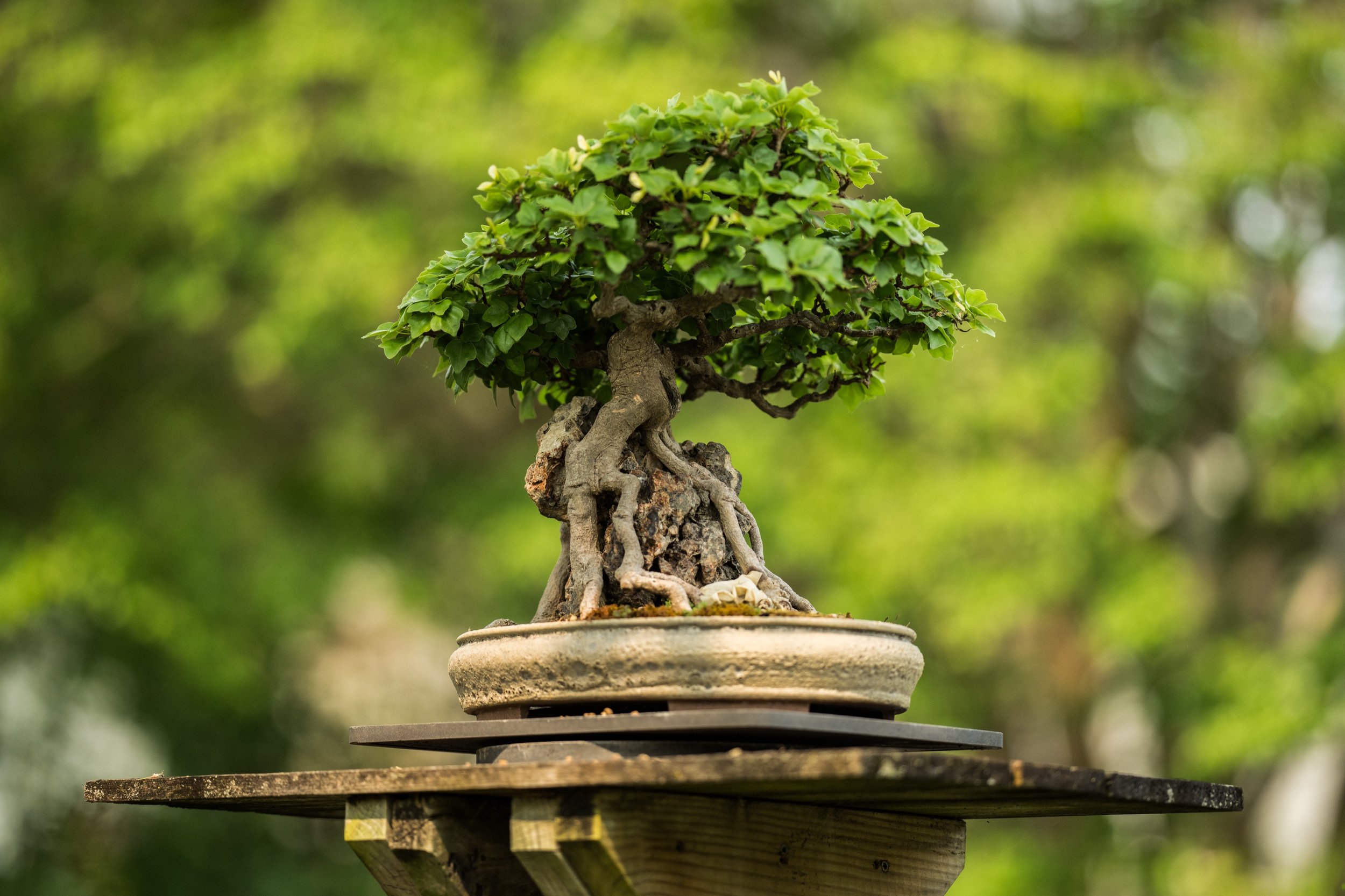Photo Credit: Olivia Anderson
Traditional bonsai are beautiful and captivating on their own, but have you ever wondered what might happen if you introduced an air of eccentricity to the classic presentation? Enter: Nick Lenz.
Lenz is an American bonsai artist well known for his provocative styling of trees collected from forests and landscapes in Northern United States and Canada. Lenz has retired from bonsai and ceramics and no longer owns any of his own trees, but is still revered throughout the bonsai world.
Photo Credit: Pacific Bonsai Museum
After securing permission from Lenz and encouragement from those who own Lenz’s bonsai and ceramics, Museum Specialist Kathleen Emerson-Dell curated an exhibit of Lenz’s work hinging on three themes: On Collecting From the Wild, On Being Unconventional and On the Drama of Nature. Dell said she selected works that would highlight Lenz’s typical themes, like whimsy, drama and wilderness for the unprecedented exhibit.
“We organized the exhibition to celebrate, honor, and introduce a new generation to Nick Lenz’s singular take on American bonsai,” she said. “We had a visitor fly in from Germany just to see the exhibit! He was in town for a week and came back several times to visit.”
Photo Credit: Olivia Anderson
“Twisted Genius: The Eccentric Bonsai Artistry of Nick Lenz” ran from Oct. 26 to Nov. 17.
The exhibit was comprised of 34 bonsai from eight private collections in New England and Minnesota and three botanical institutions – The National Bonsai & Penjing Museum, The Pacific Bonsai Museum and The Montreal Botanic Garden. Fifty-one ceramics from nine different collections were also on display.
The iconic “Penelope,” from a private collection in Toronto, and “Demon Cedar,” from the Pacific Bonsai Museum are two of Lenz’s most notable works included in the exhibit, Emerson-Dell said.
“This is the first time we have had an international loan on view at the museum,” she said.
Photo Credit: Mike McCallion
David Crust, who lent 10 bonsai and some ceramics to the Museum for the exhibit, like the trumpet bonsai or root over skull displays, said he is enthused that the Museum formally honored Lenz.
“His impact on American bonsai was very special, never much of a pro or a promoter, never much of man of doctrine or dogma, he came and left as an artist striding forward with a causal heart in his hand whispering playful things while acting out a high drama play,” he said.








